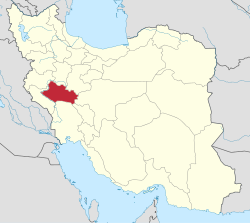 | |
| Location | northwest of Khoramabad |
|---|---|
| Region | Iran |
| Coordinates | 33°34′1.3″N48°16′26.1″E / 33.567028°N 48.273917°E |
| Part of | The Prehistoric Sites of the Khorramabad Valley |
| Criteria | Cultural: iii |
| Reference | 1744-004 |
| Inscription | 2025 (47th Session) |
Yafteh is a cave located at the foot of Yafteh Mountain in the western part of the Zagros Mountains range, northwest of Khoramabad, Lorestan Province (Western Iran). It is known for its Upper Paleolithic artefacts assigned to the Baradostian culture. It is part of the World Heritage site The Prehistoric Sites of the Khorramabad Valley (along with five other caves). [1]

